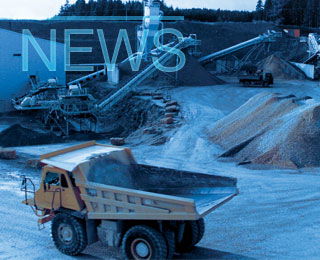The second day's afternoon session of Cemtech 'Decarbonising the cement industry' virtual conference presented four innovative technology papers on clinker reduction, alternative raw materials and new binder concepts.
FLSmidth’s Global Process Line Manager, Steven Miller, outlined why clay calcination is crucial for the cement industry to reduce is carbon footprint. "These projects have a lower capital investment than a new clinker line and produce a 'greener' product," said Steven Miller.
The key benefits of FLSmidth's clay calciner system include the quality of product that is similar to cement with high substitution rates, lower capital and operational costs, high system flexibility, low maintenance and more environmentally friendly sustainable products.
Peter Hoddinott, EMC, followed by looking at a new type of pozzolan-based cement invented by Vladimir Ronin of EMC. This 'energetically modified cement' is an ultra-low CO2 cement based on globally available minerals. Mr Hoddinott argued that "CO2 emissions reduction by clinker substitution will reach 35 per cent, but just when needed most, slag and fly ash availability are in decline."
"Activation of the pozzolan by the EMC process overcomes these drawbacks and complies with today's standards which permit up to 55 per cent substitution," he said.
The take up of EMC activated pozzolan would greatly reduce (but not eradicate) the need for clinker. Existing ball mills and grinding stations could conceivably carry out stage one grinding of pozzolan and there will be no modifications to the supply-chain since route to market, concrete production and construction processes would be unchanged.
An existing calcined clay project was then introduced by Dynamis CEO, Luiz Felipe de Pinho. He introduced viewers to the Brazilian company's D-Pozzolan® process and equipment used at the 1500tpd calcined clay production line at Argos' Rio Claro plant, Colombia.
"Challenges facing the production of calcined clay [at this project] include low-quality clay, the use of decommissioned kilns and the reddish colour of the clay," said Mr de Pinho.
Laurent Guillot, Chryso Cement BU technical director, ended the session by talking about the patent pending ICare® strength enhancing technology. The CP range is designed to improve fineness and particle size distribution and ICare VRM cement improve quality and reactivity by optimising process performance.
“ICare innovation enhances cement reactivity by creating a synergy effect between chemical and mechanical activation to further increase cement strengths at all ages," said Mr Guillot. The product also enables a lower clinker factor and reduced and CO2 emissions for cement producers and is available now for trials.
Cemtech's 'Decarbonising the cement industry' conference continues today with the fifth session 'Bringing renewable energy to the cement industry', followed by a focus on 'Carbon capture, storage and reuse' in the sixth session. Register for free and see the full programme for the four-day event here.
